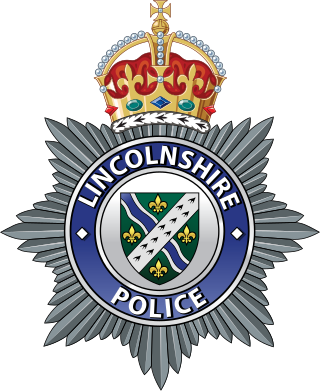
Northumbria Police is a territorial police force in England, responsible for policing the ceremonial counties of Northumberland and Tyne and Wear. It is the largest police force in the North East by geographical area and number of officers. The force covers an area of 2,141 square miles (5,550 km2) with a population of 1.46 million.

Durham Constabulary is the territorial police force responsible for policing the council areas of County Durham and Darlington in North East England. It does not cover all of the ceremonial or historic area of Durham, parts of which are covered by the neighbouring forces of Cleveland Police and Northumbria Police. The other neighbouring forces are Cumbria Constabulary to the west and North Yorkshire Police to the south.

His Majesty's Inspectorate of Constabulary and Fire & Rescue Services (HMICFRS), formerly Her Majesty's Inspectorate of Constabulary (HMIC), has statutory responsibility for the inspection of the police forces of England and Wales, and since July 2017 the fire and rescue services of England. HMICFRS is headed by the Chief Inspector of Constabulary and Chief Inspector of Fire & Rescue Services. It has taken over the responsibilities of His Majesty's Fire Service Inspectorate.

Lincolnshire Police is the territorial police force covering the non-metropolitan county of Lincolnshire in the East Midlands of England. Despite the name, the force's area does not include North East Lincolnshire and North Lincolnshire, which are covered by Humberside Police instead.

The West Yorkshire Constabulary (WYC) was, from 1968 to 1974, the statutory police force for the West Riding of Yorkshire, in northern England.

The Police Act 1964 was an act of the Parliament of the United Kingdom that updated the legislation governing police forces in England and Wales, constituted new police authorities, gave the Home Secretary new powers to supervise local constabularies, and allowed for the amalgamation of existing forces into more efficient units.
Herefordshire Constabulary was the Home Office police force for the county of Herefordshire, England, from 1857 until 1967.

The River Tyne Police was a police force established under the Newcastle upon Tyne Port Act 1845 which patrolled the River Tyne in England between 1845 and 1968.

Buckinghamshire Constabulary was the Home Office police force for the county of Buckinghamshire, England, until 1968.
Cornwall County Constabulary was the Home Office police force for the county of Cornwall, England, until 1967.
The New Year Honours were appointments by King George V to various orders and honours to reward and highlight good works by citizens of the United Kingdom and British Empire. They were announced on 31 December 1926.
The New Year Honours 1914 were appointments by King George V to various orders and honours to reward and highlight good works by members of the British Empire. They were announced on 2 January 1914.
The New Year Honours 1926 were appointments by King George V to various orders and honours to reward and highlight good works by members of the British Empire. They were published on 29 December 1925.
The 1928 New Year Honours were appointments by King George V to various orders and honours to reward and highlight good works by citizens of the United Kingdom and British Empire. They were announced on 30 December 1927.
The 1929 New Year Honours were appointments by King George V to various orders and honours to reward and highlight good works by citizens of the United Kingdom and British Empire. They were announced on 26 February 1929. The announcement of the list was delayed two months by the health of the king, who fell ill with septicaemia in November 1928. There were no recipients of the Royal Victorian Order and only two recipients in the military division of the Order of the British Empire.
The 1932 New Year Honours were appointments by King George V to various orders and honours to reward and highlight good works by citizens of the United Kingdom and British Empire. They were announced on 29 December 1931.
The 1934 New Year Honours were appointments by King George V to various orders and honours to reward and highlight good works by citizens of the United Kingdom and British Empire. They were announced on 29 December 1933.
Sir John Woodcock was Chief Inspector of Constabulary from January 1990 to July 1993.
The Liberty of Peterborough Constabulary was the territorial police force responsible for law enforcement surrounding 'The Soke of Peterborough', England, from 1856 to 1947. It was initially controlled by the Chief Constable of Northamptonshire Captain Henry Lambert Bayly 1857 - 1876. The constabulary had its headquarters in the old gaol behind the Sessions House on Thorpe Road in Peterborough.








